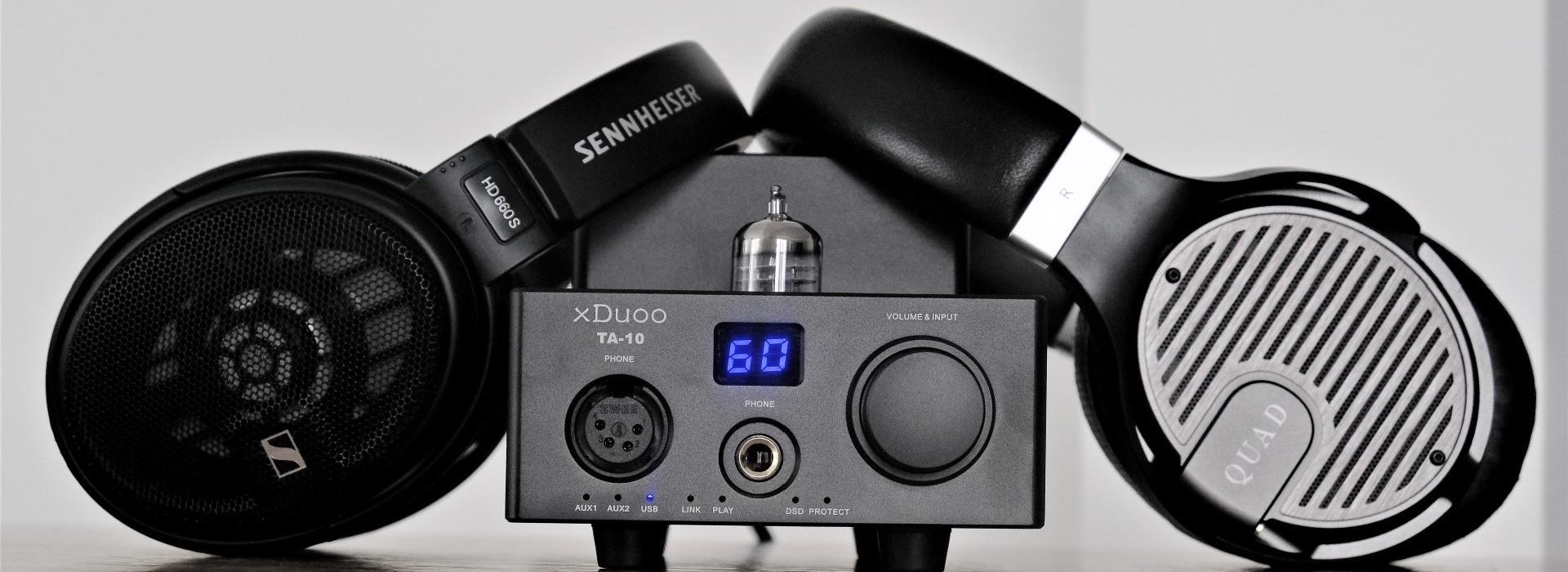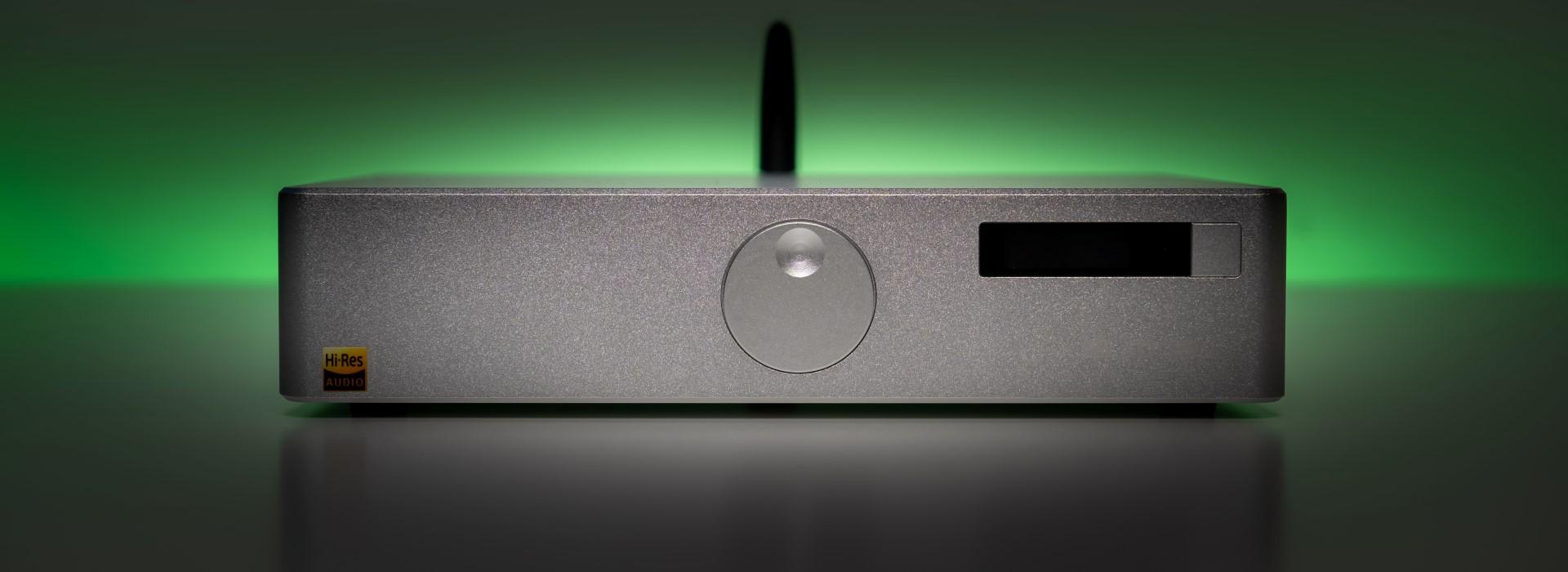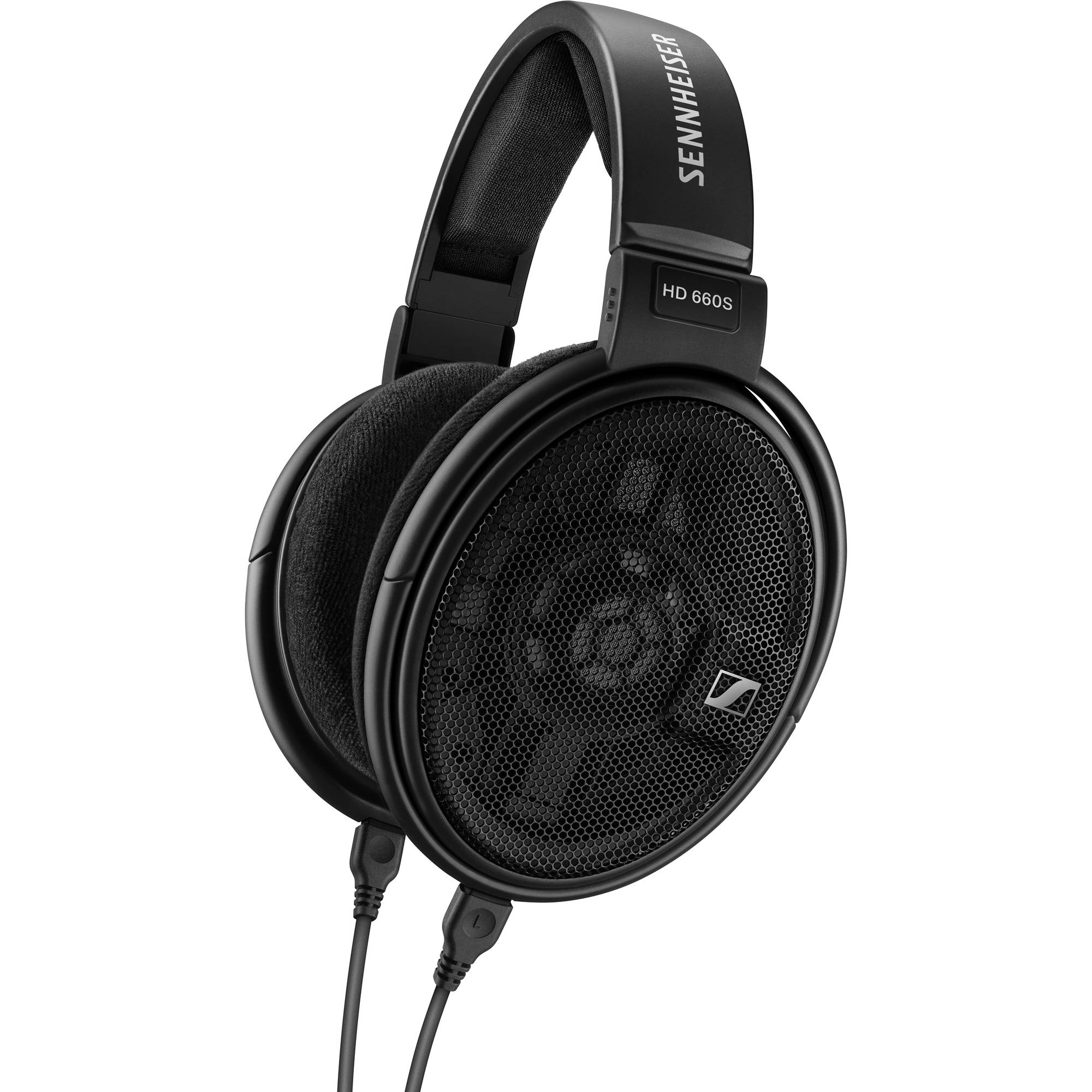
xDuoo TA-10 review - Tiny Wonder
I’ll be honest with you; I never tried any audio devices by xDuoo until today.
They are quite popular around the internet, mainly their small and portable DAC and headphone amps are making lots of appearances here and there.
Since there are a lot of reviews for their solid-state DAC and headphone amps, we decided to do a different one, we are reviewing their much underrated TA-10: a tube-based desktop headphone amp and DAC combo.
xDuoo TA-10 that is a hybrid tube headphone amp and a desktop DAC seems to be ignored by the audiophile community but I will try to change that.
Truth to be told when I was approached about TA-10 I had my doubts regarding this little device. It has a small footprint; it is pretty lightweight and uses just a single 12AU7 double-triode (an ECC82 will also work) for the final amp stage.
-1.jpg)
1. Inside the box
The unboxing experience was pretty general, the TA-10 came double boxed and the tube had extra foam protection so no harm would be done to it during shipping.
Inside you will find an instruction manual, a USB cable, a power cable, a metal tube guard and a mini-CD that contains the very important DAC drivers. Yeah…that is right, a mini-CD!
Well, how should I put it, I no longer have a CD drive on my desktop PC for about 6 years, my iMac doesn’t have a CD drive and my laptops don’t have one as well. The sad part is that those DAC drivers cannot be found on the xDuoo website and nowhere else.
I borrowed an external USB CD drive and finally installed the precious DAC drivers, without them TA-10 would not be recognized as a USB audio source. For our age and year, I would strongly recommend xDuoo putting those drivers online somewhere, it will greatly help a lot of people. So far this is my only gripe with this unit.
2. A closer look
I tried opening up the TA-10 but sadly the motherboard is soldered to the upper transformer, I could not take it out for a detailed photoshoot.
On closer inspection I found out that it has only one AKM AK4490 DAC chip, it has few transistors, few audio grade fat polypropylene capacitors, some audio grade Elna Silmic and Nichion polyester capacitors and the final stage seems to be done by a single 12AU7 / ECC82 double-triode, it also uses an output transformer. So basically, what should be known is that TA-10 is a hybrid transistor input with a tube headphone output, so it is not an all-tube input to output headphone amp. It should sound like a combination of a solid-state head amp with some tube flavor.
Another thingy that XDuoo doesn’t mention is that this is not a 100% balanced design. A single AK4490 and a single double triode would not deliver a fully balanced signal, for that, you will need the TA-20, sadly that one drops the DAC part as there is not much space inside for it.
The 4 pin XLR headphone out will deliver the same driving power as the single-ended output and was put there mainly for convenience in case you have fancier XLR headphone cables already.
-3.jpg)
3. Tech specs and detailed information
The more I use it, more I like its form factor, it’s so small it can basically be used in any situation, it works nicely in my bedroom setup, few tracks before bedtime will make me sleep better.
TA-10 seems to be nicely built, the case is 100% aluminum alloy, fit and finish is really great, especially at this price point, it weighs just 1.5 kg (3.3 lbs) and will almost disappear from your listening setup because of its size.
On the front, it has two headphone outs: a SE and 4 pin XRL, a small LCD display, and a volume knob. It also has few LEDs that will indicate your input and few other functions such as DSD playback, protection and if the DAC chip is locked and engaged.
On the back you will find a USB input, a coaxial output (basically making it a digital transport), there are two RCA inputs and an RCA preamp output. So, yeah, it can be used as a preamp as well, in case some tube flavor is needed in your audio chain.
The USB input signal is been taken care of by a quality XMOS solution that works in the async mode for a better jitter rejection. TA-10 will play your PCM material up to 32bit 384 kHz and your DSD material up to DSD256. It offers 2000mW of power on both the SE and 4pin XLR output and has a gain of +18 dB, which is plenty even for hard to drive headphones.
I am really glad the volume rises gradually really slow – in case I want to use it with very sensitive headphones such as IEMs or portable ones. It shows its muscles around 70 volume and up from that position.
The 12AU7 tube used is a current production Chinese tube, it can be rolled with something fancier.
I already ordered a pair of TAD 12AU7A Premium Selected tubes that should be here in about a week or two, if you want to get the best of it, New Old Stock (NOS) tubes are the way to go. Mullard is making NOS 12AU7 /ECC82 military grade tubes; I recommend the ones from the Cold War era, having reinforced plates and overall better build quality than current production tubes.
On paper, it looks really great as it has a fine selection of audio components, fit and finish is good with a small form factor, nothing to complain really.
Now let’s get some sound impressions.

4. Sound Performance
4a. Soundstage
What a pleasant surprise. Soundstage size it the first thing that hits you.
I am mainly listening on nice solid-state amps and frankly, none of them excel at soundstage size and scale.
TA-10 really opens up the stage in a very interesting manner.
I knew my Sennheiser HD660S and my Quad ERA-1 headphones can produce a greater stage on few select headphone amps but I really didn’t expect as much improvement in this area.
Soundstage just decompressed, HD660S are not upfront and intimate anymore, but much more open wide and grand sounding.
Having a much wider soundstage especially on the left to right space you get more open space between the notes to really appreciate them individually.
The decay of the notes is as expected a bit longer, but who cares when you have so much time to appreciate those small micro-details and tiny dynamic swings.
4b. Depth & Imaging
A direct effect of the bigger stage is the improved depth and imaging.
The small TA-10 images like crazy in a very 3D way even with that stock tube, I only can imagine what a TAD or a Mullard tube can accomplish.
Listening to live recordings I can easier see and walk through my recordings. Everything is not happening inside your head but around your body somehow and in a very 3D manner.
The rock tunes of late I am listening are quite up-front sounding with my go-to solid-state amps but with TA-10 it’s like my headphones got upgraded to the next level soundstage and depth-wise.
-5.jpg)
4c. Transient response
A second thought is how different it is sounding comparing to an all-tube design.
I mean it has a bit of tube warmness and liquidity to it, but damn it also sounds precise and fast and I can rarely attribute those last two words to tube amps.
Transient response is in the solid-state amp category for sure and it keeps up even with fast electronica and double-drums heard on my rock tunes.
My former Woo Audio WA6SE never excelled with fast electronica and overall was never keeping up with fast transients and wild dynamic swings.
TA-10 is quite different in this manner.
Listening to some older recordings such as Led Zeppelin, The Doors and Beatles the slight fog of the old recording is very apparent and easy to spot. The liquidity of the recording is still there too. I think it works nicely with new and old recordings alike.
Due to a meatier presentation and heavier texture it also has a greater sense of slam into your eardrums. It is quite apparent with heavier music where lots of instruments are flying around the listener.
4d. Frequency Response
Now, I listened to TA-10 as an all-in-one solution but also connected to my Matrix X-Sabre Pro DAC to get a better feeling of the amp and DAC sections.
Listening to it as a DAC/Amp combo revealed that AK4490 inside was tuned towards a detailed presentation with just a tiny bit more warmness and liquidity than a normal Delta-Sigma DAC would produce.
AK4490 is part of the “Velvet Sound” DAC category on the AKM site, so it all makes sense.
Most of the time I have listened to it as a DAC/Amp combo because I felt I didn’t miss much musical information compared to my home DAC.
-6.jpg)
Bass
TA-10 with the stock tube has good sub-bass response and can render even lowest notes easily. Mid-bass is elevated a bit but in a very natural way, it resembles the Harman curve very much. In all honesty, I prefer a little bit of bass boom and TA-10 delivers exactly that.
Due to a high-power output bass is not only delivered but also maintained and controlled by a good grip. Higher power solid-state amps have a somewhat better grip and control, but that was really expected. In my opinion, TA-10 has excellent driver control and can maintain high dynamic swings from bass to treble.
Midrange
This is where TA-10 and basically all-tube amps excel: Midrange presence and density.
All instrumental music excelled with TA-10 as it puts a bit of soul into those instruments, it just sounds so alive and real.
Guitar plucks and in general string-based instruments have such a pleasant vibration and decay as I can listen to them all day long and not be tired at all.
Voices have a much higher density, volume and weight it’s almost overwhelming at times.
Soprano and opera sounded impressive and at times too good to be true, I can’t believe I am listening to a sub 300 dollar DAC/Amp combo!
Treble
Transitioning from bass to mids to treble is done in a quite smooth fashion.
With this tube treble detail is good; I expect all current production tubes to sound almost the same in this regard, NOS tubes will have a roll-off in this area most likely.
Treble resembles a solid-state amplifier a lot and is not rolled-off almost at all.
I said “almost” because who I am kidding, it is not the most extended in the upper treble and it is a bit smoother compared to solid-state amps.
-4.jpg)
4e. Listening Fatigue
Imagine having an overall smoother presentation with slight roll-off on the upper treble, with great and meaty midrange performance and bloomy bass, I can listen to that for hours and hours.
TA-10 is very good in a listening marathon since it has no listening fatigue at all.
There are a lot of people that are listening in their offices at work and frankly, TA-10 is really great at that, it will get the job done without piercing your ears or clenching your teeth.
Apart from everything that was mentioned above TA-10 has a somewhat higher enjoinment level compared to a solid-state amplifier.
TA-10 has a slight coloration, which is true, especially in the midrange where it has boosted harmonics, but it all contributes to a believable sound, it just sounds natural somehow, without fake dynamics or empty textures, it is pleasant sounding in the long run.
4f. Power output
TA-10 surprised me with its robust power output and pretty low distortion levels even at high volumes.
With my Quad ERA-1, I really can’t go higher than 80 out of 100, I feel it will blow my eardrums, at that volume I have a pitch-black background and very safe levels of distortion.
With my Sennheiser HD660S, I can’t go higher than 75, again with a very black background and safe level of distortion.
Connecting my very sensitive and low impedance FiiO FA7 shown a different story.
Volume-wise, it sits comfortably at about 40 to 50 volume, going a bit upper background becomes dirtier and a slight hum can be heard. Sadly, the hum can be heard on any volume, including at zero.
As a general rule of thumb, I do not recommend tube or hybrid amplifiers with in-ear monitors. Harmonic distortion levels are a bit higher than a typical solid-state amplifier and very sensitive earphones can pick that up, not to mention transformer hum that doesn’t go away with IEMs.
This was exactly the case with FA7, where higher levels of distortion and noise were heard. On very low volume background was not pitch black and a low hum will annoy your listening experience.
This is the only true drawback of TA-10, as balanced armatures do not work really well with tubes.
-7.jpg)
5. Comparisons
xDuoo TA-10 (300 USD) vs Burson Playmate (400 USD – basic version)
In terms of size, Burson is a bit bigger but really both quite small and easy to integrate into tiny workspaces. Both are DAC and headphone amp combos, TA-10 is a hybrid design and Playmate is an all-discrete transistor amplifier. On TA-10 you can roll your tube with something better and on Playmate you can roll the op-amps inside, putting Burson’s own V6 variants will double its price.
Burson is a bit more expensive and uses an ESS Sabre DAC chip, TA-10 instead uses a more musical AK4490 DAC chip.
Power-wise both a very close. Since Burson has a higher power output only at higher impedance it will drive higher resistance headphones better and will provide better control and grip. TA-10 will work better with medium impedance headphones, but it works nicely with high impedance ones as well.
Both are putting a strain on your listening music and have a character of its own.
Burson is always musical and engaging sounding, with great slam and impact than usual. Playmate will kick harder and overall has faster transients.
xDuoo TA-10 will have a meatier midrange and an overall denser tone, with an apparent mid-bass hump and a slight upper-treble roll-off.
I believe both are very universal with a very “safe” musical presentation and you really can’t go wrong with any of them.
TA-10 will offer just a bit more life and soul to your music and will sound grander, wider and taller with better pinpoint imaging. Unfortunately, Playmate can’t match it in this regard and will sound tinier and more crowded.
Playmate instead wins in terms of headphone pairings as it sounds excellent even with tiny in-ear monitors, with those TA-10 will struggle and will show a bit of hum and transformer noise.
xDuoo TA-10 (300 USD) vs FiiO Q5 with AM3A amp module (350 USD)
In terms of size Q5 is much smaller and it is really a portable solution whereas TA-10 is a desktop device.
Both are using the same DAC chip, TA-10 is a hybrid tube design, Q5 is an op-amp based headphone amp.
Sonically, Q5 sounds more detailed, I think FiiO used better crystal clocks and resistors. Q5 will have a better detail retrieval and much more energy up top. Q5 is also much more linear sounding without any obvious coloration.
This is quite strange as it is the first time when an AK4490 based DAC/Amp can sound so analytical and neutral, “velvet sound” is nowhere to be found here.
TA-10 is much more powerful and can drive basically any headphone with good grip and control. TA-10 also has a denser and meatier presentation, notes are sounding fuller and heavier. It has a small emphasis on bass slam and midrange presence; it is just more natural sounding and very easy going in the long run. Q5 will induce listening fatigue much faster.
TA-10 is also more enjoyable to listen, you just don’t want to analyze your music anymore but just listen to it in a relaxed way. Q5 is more like a magnifying glass for your music; any imperfections will be shown and thrown to your face.
Q5 is better with IEMs, TA-10 is better with everything else as it has much more driving power even for planar-magnetics, Q5 sadly can’t move those drivers efficiently.
6. Conclusion
So here we have it, folks.
This is my first contact with xDuoo but I don’t think it will be my last. I have a balanced DAC and I am really curious how a TA-20 will sound with it, especially with a nice pair of premium tubes.
Build quality-wise there is nothing to complain about; it’s sturdy and built to last, I like its looks as well, I just wish that tiny LCD could be dimmed a bit.
Sonically, with proper desktop headphones, it always put a smile on my face and it surprised me a few times with some clever tricks that only a solid-state amplifier could perform.
There is just one con that needs to be said: it doesn’t work well with IEMs, don’t use it with them and you’ll be safe.
xDuoo, please ditch the mini-CD and put those drivers online, you’ll thank me later ;)

PROS:
- Warmer and smoother tonal balance
- Great flow and easiness
- Good kick and impact
- Powerful headphone amp section
- Good depth and a wider than usual soundstage
- Good price to performance ratio
CONS:
- Rolled-off upper treble
- Has transformer hum/noise with very sensitive earphones


